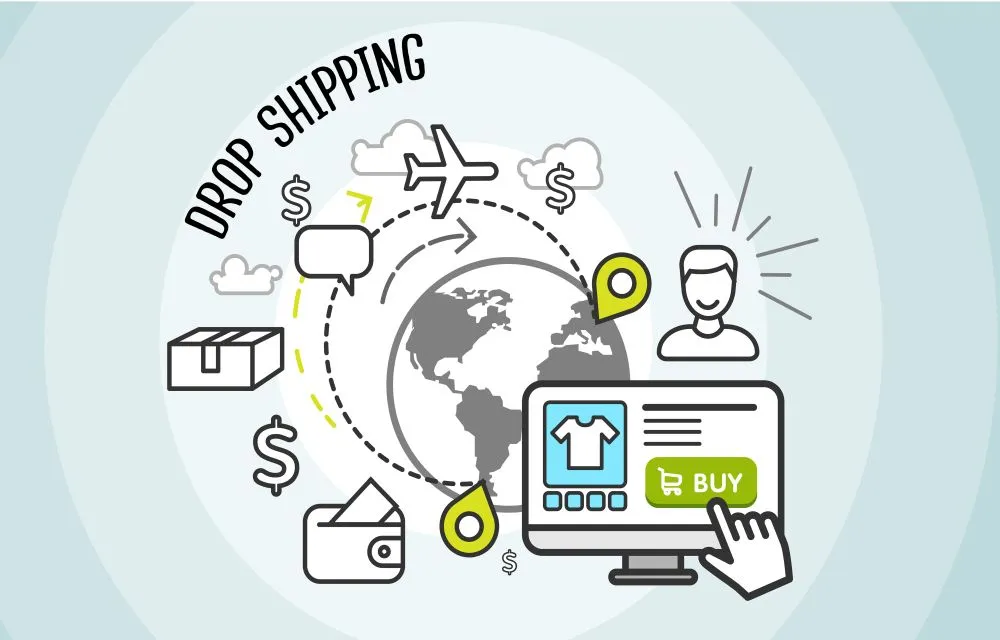Are you interested in starting a dropshipping business? Dropshipping is a great way to start an online business with little to no upfront investment. In this post, we’ll show you how to build a dropshipping empire from scratch.
We’ll cover everything you need to know to get started, including how to find the right products to sell, how to create your website, and how to drive traffic to your site. We’ll also give you some tips on how to scale your business and take it to the next level. If you’re ready to start your own dropshipping business, then this post is for you.
Let’s get started!
How Dropshipping Works
In the most basic sense, dropshipping is a business model in which ecommerce entrepreneurs sell products without having to carry any inventory. When a store owner receives an order from a customer, they simply contact the supplier, who will then ship the products directly to the customer’s door.
Deciding on a Niche
If you’re considering starting a dropshipping business, the first step is to choose a niche. This can be a tricky task, as there are endless possibilities. Try to narrow it down by thinking about what products you’re passionate about, what needs are currently not being met in the market, and what you could realistically sell.
Once you’ve decided on a niche, do some market research to see if there’s potential for profitability. This will involve looking at the competition, understanding the target market, and estimating shipping and other costs.
With this information in hand, you can make a better decision about whether starting a dropshipping business in your chosen niche is a good idea.
Recommended tools to help you in your research include Helium10, AMZScout, Jungle Scout, SellerApp, etc.
Finding the Right Products
After deciding on a niche, the next step is to find the right products for your drop shipping business.
You can do this by checking out popular online forums and social media groups related to your niche. Once you’ve found a few potential products, you’ll need to research the competition to see what other businesses are selling and how they’re selling it.
Finally, you’ll need to decide if you can profitably sell the products you’ve chosen. To do this, you’ll need to calculate your costs, including the cost of the product, shipping, and any other fees associated with selling it.
Getting Suppliers
To find suppliers for your drop shipping business, you can use a number of methods.
First, you’ll need to compile a list of potential suppliers. You can find suppliers by searching online directories, visiting trade shows, or contacting manufacturers directly.
Once you have a list of potential suppliers, you’ll need to evaluate each one to determine if they’re a good fit for your business. This evaluation should include factors such as price, quality, delivery time, and customer service.
Once you’ve found a few good suppliers, you’ll need to establish relationships with them. This includes creating contracts, negotiating terms, and building rapport.
Setting up Your Store
Assuming you have already chosen the products you will be drop shipping and found suppliers, the next step is to set up your store.
Different types of websites can be used for a drop shipping store. The most popular types of websites used for drop shipping is WooCommerce and Shopify websites.
Other website platforms that can be used for drop shipping include BigCommerce, and Magento. Each of these platforms has its own set of features and benefits. WooCommerce is the most popular platform because it is free to use and has a wide range of plugins and themes available. Shopify is a close second, as it is easy to use and has a wide range of features too. BigCommerce and Magento are less popular but still have their own set of benefits.
Once your store is created, you will need to add your products. Be sure to include high quality product photos, as well as detailed descriptions. You will also need to set up your payment system and shipping options. Once all of this is done, you are ready to start taking orders!
Driving Traffic to Your Site
There are many ways to drive traffic to your drop shipping store.
One way is to create interesting and keyword rich content on your blog or website. You can also use social media to draw attention to your store.
Additionally, you can use online advertising to reach a larger audience. You can also participate in online forums and directories to get your store noticed.
Finally, you can use email marketing to reach potential customers directly.
Tips on How to Scale Your Business
Assuming you have a drop shipping business, there are a few key things to do in order to fulfill orders professionally.
First, you need to have a good understanding of your product and what it takes to fulfill an order. This means having a good understanding of your supplier, your inventory, and your shipping process.
Second, you need to be organized and have a system in place for tracking orders. This includes maintaining accurate records of orders, tracking inventory, and keeping customers updated on the status of their order. Though much of this process will be in the hands of the supplier, it’s your responsibility to ensure that everything is running smoothly.
Third, you need to be responsive to customer inquiries and issues. This means being available to answer questions, resolve problems, and keep customers updated on the status of their order.
By following these steps, you can ensure that you are fulfilling orders in a professional and efficient manner..
Conclusion
There’s no doubt that dropshipping is a great way to get started in ecommerce. It’s simple, it’s low risk, and it’s easy to get started. But what if you want to take your dropshipping business to the next level? How can you scale your business into an ecommerce empire?
To scale your dropshipping business, start by expanding your product line. Add new products that complement your existing ones, and target new markets with your marketing. Then, open new sales channels like social media, marketplaces, and email marketing. And finally, invest in automation tools to help you scale your business even further.










